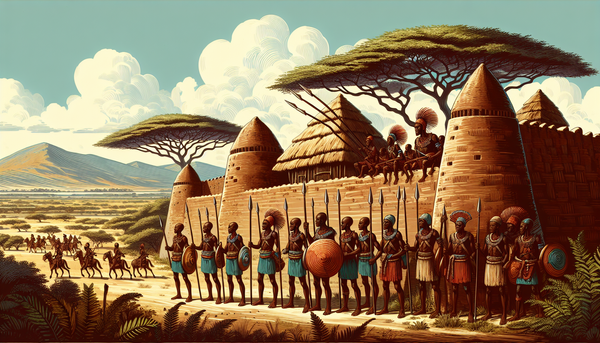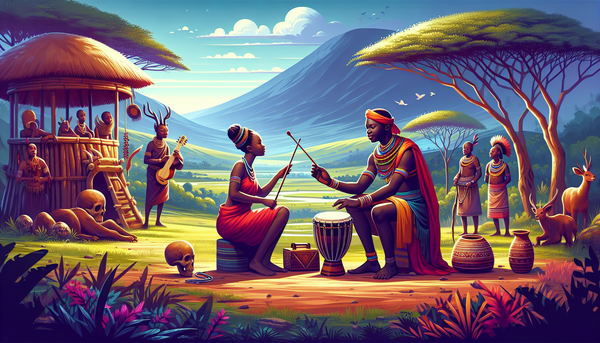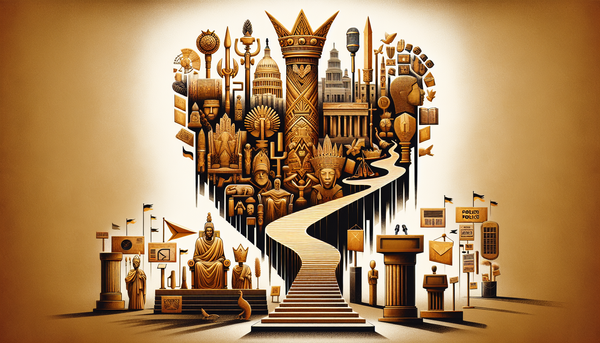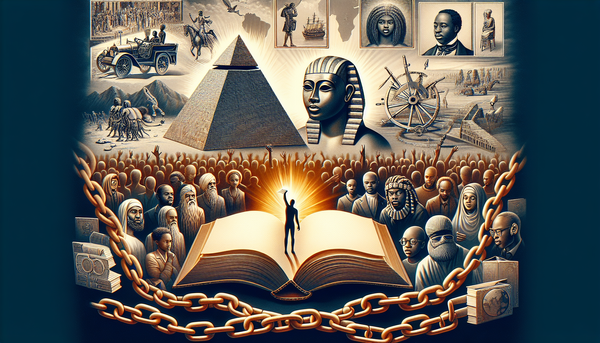The Origins and Evolution of African Drumming
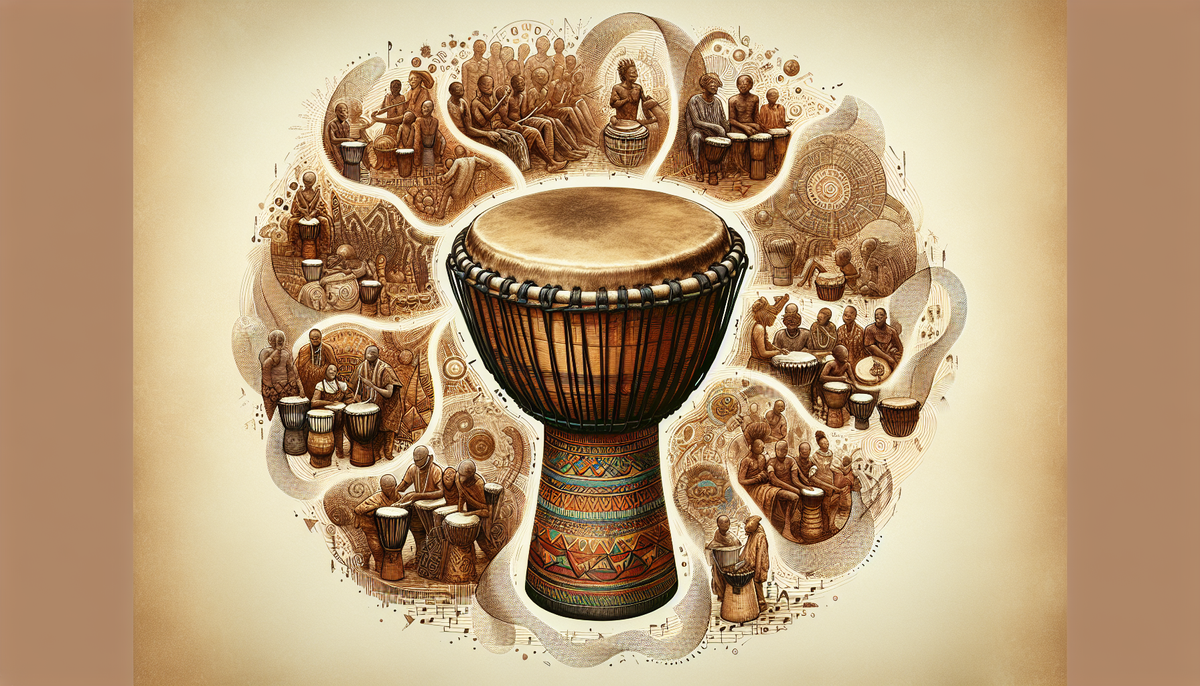
Introduction to African Drumming History
African drumming is a vibrant and essential aspect of the continent's rich cultural heritage. The history of this musical tradition dates back thousands of years, with roots deeply embedded in the social, spiritual, and communal practices of various ethnic groups. Drumming served not only as a form of entertainment but also as a vital means of communication, storytelling, and ritualistic expression.
Historically, drums were crafted from indigenous materials, such as animal skins, wood, and metal, embodying the creativity and artistry of the community. Each region in Africa has its unique drumming style, often influenced by language, culture, and geographical factors. From the djembe of West Africa to the talking drums of the Yoruba people, these instruments reflect the diverse rhythms and sounds present across the continent.
Drumming played an essential role in celebrations, ceremonies, and rites of passage, strengthening community bonds and conveying messages across distances. As African societies evolved and encountered external influences, drumming adapted, incorporating new elements while retaining its traditional significance. Today, the legacy of African drumming continues to inspire musicians worldwide, bridging cultural divides and celebrating the beauty of communal expression through rhythm.
Early Instruments and Rhythms
The origins of African drumming can be traced back to ancient times, with early instruments that reflect the ingenuity of diverse cultures. Among the most recognized is the djembe, a goblet-shaped drum made from a single piece of wood and covered with animal skin. The djembe produces a wide range of tones, enabling drummers to convey complex rhythms and emotions. Its roots lie in the Mandinka people of West Africa, where it played a central role in community gatherings and storytelling.
Another significant instrument is the talking drum, which is capable of mimicking the tonal languages spoken in many African communities. This drum is used not only for music but also for communication, transmitting messages across distances. The rhythms produced often correspond to the speech patterns of local languages, allowing for a unique form of dialogue.
Other early percussion instruments include the balafon, a wooden xylophone, and various types of shakers and rattles. These instruments contributed to the rhythmic foundation of African music, where polyrhythms—multiple distinct rhythms played simultaneously—are common. The early rhythmic structures laid the groundwork for the diverse musical traditions that continue to thrive across Africa, influencing countless genres worldwide.
Regional Variations Across Africa
Africa is home to an incredible diversity of cultures, languages, and musical traditions, resulting in a rich tapestry of regional variations in drumming styles. Each area boasts unique rhythms, techniques, and instruments that reflect the local heritage and social context.
In West Africa, the rhythms of the djembe and kpanlogo drums are integral to cultural events and ceremonies. Countries such as Mali and Guinea emphasize masterful hand techniques that produce a wide array of sounds, showcasing the skill of the drummer. In contrast, the Yoruba people of Nigeria utilize the talking drum, akpola, to create intricate patterns that mirror the tonal nuances of their language.
Moving east, the taarab music of coastal regions like Zanzibar incorporates the traditional ngoma drum, blending African percussion with Middle Eastern influences. This fusion highlights the impact of trade and migration on local music.
Further south, countries like South Africa display a variety of traditional drumming styles that are often associated with dance and social gatherings. Instruments such as the umrhubhe and the isitshikitsha play significant roles in community celebrations.
These regional variations illustrate not only the diversity of African rhythms but also the interconnectedness of cultural practices, showcasing how drumming serves as a vital expression of identity across the continent.
Cultural Significance and Rituals
Drumming in African culture holds profound significance, serving as a vital means of expression, communication, and community bonding. It plays an integral role in various rituals and ceremonies, symbolizing the heartbeat of tradition and spirituality. From birth celebrations to funerals, drumming sets the tone for events, guiding participants through the emotional landscape of each occasion.
In many African societies, drummers are regarded as custodians of history, responsible for preserving and conveying the stories of their people through rhythm and music. During rites of passage, such as coming-of-age ceremonies, drumming is employed to signify transformation and the transition into new life stages. It fosters a sense of belonging and connection among community members, reinforcing shared identity and heritage.
Additionally, drumming is intertwined with spiritual practices, often facilitating communication with ancestors and the divine. In ceremonies dedicated to honoring spirits, rhythmic patterns evoke powerful emotions, creating an atmosphere of reverence and collective energy. The act of drumming can also serve as a form of healing, providing comfort and solace to individuals during times of distress.
Through these multifaceted roles, African drumming demonstrates its cultural significance, embodying the values, beliefs, and shared experiences that bind communities together across generations.
Influence on Modern Music Genres
The impact of African drumming on contemporary music is profound, shaping various genres around the globe. As African musical traditions encountered new influences through colonization and migration, they began to merge with styles such as jazz, blues, rock, and hip-hop, creating hybrid forms that celebrate rhythm and percussive elements.
In jazz, African rhythms have been essential for developing complex polyrhythms and improvisation techniques, with notable musicians like Max Roach and Art Blakey incorporating African-inspired drumming into their compositions. Similarly, the blues genre reflects African musical roots through its use of call-and-response patterns, emotional expression, and rhythmic variations.
Rock music also borrowed heavily from African drumming, with bands like The Rolling Stones and Led Zeppelin adopting African influences in their percussion sections. The incorporation of traditional instruments, such as the djembe and conga, has added unique layers to rock compositions, enhancing their overall dynamism.
Moreover, hip-hop culture has embraced African rhythms, utilizing sampling techniques that incorporate traditional drumming sounds to create vibrant beats. This connection highlights the enduring legacy of African music, demonstrating how its rhythms continue to resonate in the modern musical landscape, bridging cultures and fostering creativity across diverse genres.
Famous Drummers and Their Techniques
African drumming has produced numerous renowned drummers who have made significant contributions to the art form, each showcasing unique techniques that express their cultural heritage. Among them, Mamady Keïta from Guinea is celebrated as a master djembe player. His intricate hand techniques, which include slaps, tones, and bass notes, allow him to play complex rhythms that captivate audiences. Keïta is also known for his innovative teaching methods, helping to spread West African drumming traditions worldwide.
Another prominent figure is the late Tony Allen, the Nigerian drummer known for pioneering the Afrobeat genre alongside Fela Kuti. Allen’s use of polyrhythmic layering and syncopation crafted a distinctive sound that influenced countless musicians. His ability to fuse traditional African rhythms with jazz and funk showcases the versatility of African drumming techniques.
In the realm of contemporary music, South African drummer Louis Moholo-Moholo has gained recognition for his work in free jazz, emphasizing improvisation and spontaneity in his drumming style. His focus on collaboration and experimentation illustrates the evolving nature of African percussion.
These drummers, among many others, not only demonstrate exceptional skill but also reflect the rich cultural tapestries from which their musical traditions emerge, continually inspiring new generations of musicians.
Preservation and Education Efforts Globally
As the global appreciation for African drumming continues to grow, numerous preservation and education efforts have emerged to safeguard its rich heritage. Many cultural organizations and non-profit initiatives focus on documenting traditional drumming practices, ensuring that knowledge is passed down through generations. In areas like West Africa, local communities actively participate in preserving their musical traditions through workshops and community gatherings, fostering a sense of pride and continuity.
Schools and educational programs worldwide are increasingly incorporating African drumming into their curriculum, emphasizing the importance of cultural diversity and musical literacy. Institutions such as the University of Ghana and the Royal Academy of Music in London offer courses and degrees centered around African music, allowing students to explore the intricacies of drumming techniques and rhythms.
In addition to formal education, numerous drumming circles and community classes thrive globally, inviting individuals from all backgrounds to learn and engage with African rhythms. These gatherings not only promote cultural exchange but also create spaces for social connection and creativity.
Furthermore, online platforms and initiatives have made African drumming accessible to a wider audience, allowing enthusiasts to learn from experienced practitioners regardless of their geographical location. Through these combined efforts, the vibrant art of African drumming is being preserved, celebrated, and revitalized for future generations.
